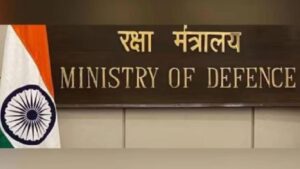Raipur, August 29, 2024: Agro-scientists have admitted attack of stem borer insect in paddy fields in the southern part of Chhattisgarh.
Giving details official sources said a team of agriculture scientists have informed that the caterpillar stage of stem borer insect damages the crop. This insect has four stages- egg, caterpillar, pupa and butterfly.

Female butterfly lays eggs in groups near the tip of leaves. Caterpillar emerges from the egg which is light yellow in colour. After the caterpillar emerges, the caterpillar first eats the leaves and then slowly enters the cob, due to which the growth of the plant stops. The insect cuts the stem of the cob of the plant from the bottom, due to which the middle part of the paddy plant dries up. The dried part is called dead heart.
This insect attacks at the time of emergence of flowering, which causes heavy damage to the crop. The grains are not developed and are dry up and turn white, which is called white head. The affected grains come out easily when pulled. In many grains, the caterpillar is visible inside.
Agricultural scientists have informed about many effective measures for its control, in which while transplanting, the upper part of the plant should be cut a little and then transplanted. Keep the fields and ridges free from weeds. Use nutrients in balanced quantities. Monitor the field from time to time and destroy the eggs if they are visible.
Install T-shaped bird towers for birds to sit in the fields. Install pheromone traps to attract male butterflies. Install light traps or lights in the fields to catch nocturnal insects. 50 thousand eggs of egg parasite Trichogramma japonicum should be released in the field two to three times at the rate of per hectare.
Do not spray chemical insecticides at that time. Use Neem Azadirachtin 1500 ppm at the rate of 2.5 liters per hectare. Spraying of granular insecticides should be done before the embryo formation stage. When rains stop and weather becomes clear, use any one of the insecticides. Chloretaniliprole 0.4 percent GR 10 kg per hectare or Chlorpyrifos 20 EC 1250 ml per hectare or Curtaf hydrochloride 50 percent SP 1000 gram per hectare or Chloretaniprole 18.5 percent SC 150 ml per hectare or Fipronil 5 percent SC 1000.1500 ml per hectare or Flubendamide 20 percent W. G. Effective control can be achieved by using 125 grams per hectare, official sources said.
If the situation is not resolved, another insecticide should be sprayed after 15 days. However, chemical medicines should be used only after contacting the scientists of Krishi Vigyan Kendra and officials of the Agriculture Department, they added.
More Stories
Paddy procurement accelerates, Token Tuhar Hath app simplifies procurement process
The procurement of paddy from farmers at the support price continues uninterrupted in all districts of Chhattisgarh.
Historic Implementation of Labour Reforms Under the Leadership of Prime Minister Narendra Modi: Chief Minister Sai
Chhattisgarh Chief Minister Vishnu Dev Sai today praised the leadership of Prime Minister Narendra Modi and Union Labour and Employment Minister Dr. Mansukh Mandaviya for the “historic” implementation of four labour codes in the country.
Digitization of over 6.5 million forms completed in the Special Intensive Revision (SIR) campaign
The Special Intensive Revision (SIR) of voter lists is underway in Chhattisgarh in full swing.
Chief Minister Sai presents Bastar Art statue of Birsa Munda to President Murmu
An inspiring and solemn moment was witnessed at a function held in Ambikapur on the occasion of Janjatiya Gaurav Diwas (Tribal Pride Day), when Chief Minister Vishnu Dev Sai presented a memento to President Droupadi Murmu, a statue of Dharti Aba Bhagwan Birsa Munda, created in Bastar Art.
Tribals getting new opportunities for education, livelihood, health and development: President Droupadi Murmu
President Droupadi Murmu today described the Central Government’s ‘Adi Karmayogi Abhiyan’, ‘Dharti Aba Janjati Gram Utkarsh Abhiyan’, and ‘Pradhan Mantri Janman Abhiyan’ as important steps for the upliftment of tribal society.
CM Sai, Union Minister Chouhan Release ChhattisKala Brand
With the aim of providing a single identity and a unified market platform for quality products, Chhattisgarh Chief Minister Vishnu Dev Sai and Union Agriculture and Rural Development Minister Shivraj Singh Chouhan today launched the much-awaited unified state brand, ChhattisKala, at the Dhamtari district headquarters.


